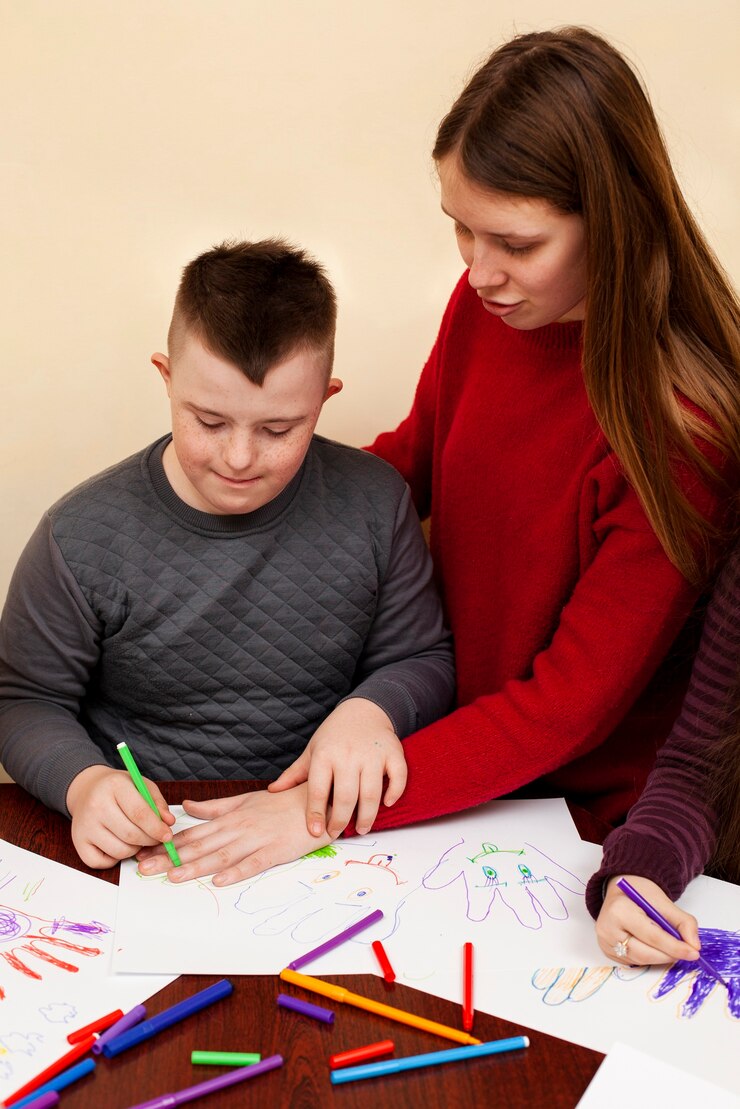Learning Opportunities for All Education should be a right for every child, but for many students, especially those with disabilities or from marginalized communities, the traditional education system has been inaccessible or unwelcoming. Inclusive education practices aim to change this by making learning accessible and meaningful for every student, regardless of their background, ability, or needs. It’s about creating classrooms where diversity is embraced, and every learner is valued and supported.
What is Inclusive Education?
Inclusive education is an approach where students of all abilities and backgrounds learn together in the same environment. This practice involves integrating students with special needs into general education classrooms instead of segregating them. The goal is to ensure that all students, regardless of their differences, have access to the same educational opportunities and experiences.
In an inclusive classroom, teachers use a variety of teaching strategies, materials, and assessments to address the diverse learning styles and needs of students. This practice not only benefits students with disabilities but also enriches the learning environment for all students, fostering empathy, collaboration, and respect for diversity.
The Importance of Inclusive Education
Equality and Fairness
Inclusive education ensures that all children, regardless of their differences, have equal access to quality education. This practice helps break down societal barriers, creating a more just and equitable world.
Social Benefits
Inclusive education encourages students to interact with people from diverse backgrounds. These interactions help build empathy and understanding, reducing prejudice and fostering a sense of community and cooperation.
Improved Academic Performance for All
Research has shown that inclusive classrooms benefit not only students with disabilities but also typically developing students. The diverse learning environment and differentiated instruction lead to a richer educational experience for everyone.
Personal Growth and Development
By learning to work with diverse peers, students develop important life skills like teamwork, communication, and problem-solving, which are essential in both school and the real world.
Key Practices for Inclusive Education
To create an inclusive classroom, educators must adopt various strategies that cater to the diverse needs of their students. Some of the most effective inclusive education practices include:
1. Differentiated Instruction
Differentiated instruction involves tailoring teaching methods and materials to meet the varying needs of students. This could mean providing visual aids for visual learners, offering written instructions for students who need them, or using hands-on activities for students who learn best through tactile experiences.
For example, a teacher may offer multiple ways for students to demonstrate understanding—through written reports, oral presentations, or creative projects—depending on their strengths and preferences.
2. Universal Design for Learning (UDL)
Universal Design for Learning (UDL) is an educational framework that ensures all students have access to the curriculum. UDL uses multiple means of representation (e.g., videos, text, diagrams), engagement (e.g., interactive activities, peer learning), and expression (e.g., written, oral, artistic presentations). This approach accommodates diverse learners by providing flexibility in how they engage with the material and express their learning.
3. Collaborative Learning
Inclusive classrooms encourage collaborative learning, where students work together in groups to solve problems, share knowledge, and support each other’s learning. Collaborative learning helps foster communication, teamwork, and mutual respect among students of different abilities and backgrounds.
For example, group projects can be designed to incorporate diverse skills, allowing each student to contribute in a way that plays to their strengths, whether through research, presentation, or creative tasks.
4. Peer Support
Peer support is another vital aspect of inclusive education. Students with disabilities or special needs can benefit from the assistance and companionship of their peers. By forming buddy systems or mentorships, students learn to support each other academically and socially, helping to break down social barriers and promote inclusion.
Peer tutors can also help students with learning difficulties, reinforcing lessons in a way that is more approachable and personalized.
5. Use of Assistive Technology
Assistive technology plays a key role in making education accessible to students with disabilities. Tools like text-to-speech software, speech recognition systems, hearing aids, and adaptive keyboards help students engage with learning materials in ways that suit their needs. By integrating assistive technology into the classroom, educators ensure that all students can fully participate in the learning process.
Overcoming Challenges in Inclusive Education
While the benefits of inclusive education are clear, there are challenges to its implementation:
Lack of Resources
Some schools may not have the necessary resources, such as specialized staff or assistive technology, to properly support diverse learners. To overcome this, schools need sufficient funding and support from local authorities to provide the necessary tools and staff.
Teacher Training
Teachers need ongoing professional development to effectively implement inclusive education practices. Training in differentiated instruction, behavior management, and using assistive technology can help educators meet the diverse needs of their students.
Attitudinal Barriers
Overcoming negative attitudes towards students with disabilities or other challenges can be a significant barrier. Schools need to foster an inclusive mindset among all staff and students, promoting the idea that every child deserves an equal opportunity to learn.
Conclusion
Inclusive education is not just a teaching method—it is a commitment to providing all students with the opportunity to succeed, regardless of their background or ability. By embracing inclusive practices, schools can create classrooms where diversity is celebrated, and every student’s strengths are recognized and nurtured.
When implemented effectively, inclusive education leads to greater social harmony, academic achievement, and personal development. It ensures that no child is left behind and that all students have the tools and support they need to thrive in the classroom and beyond.







